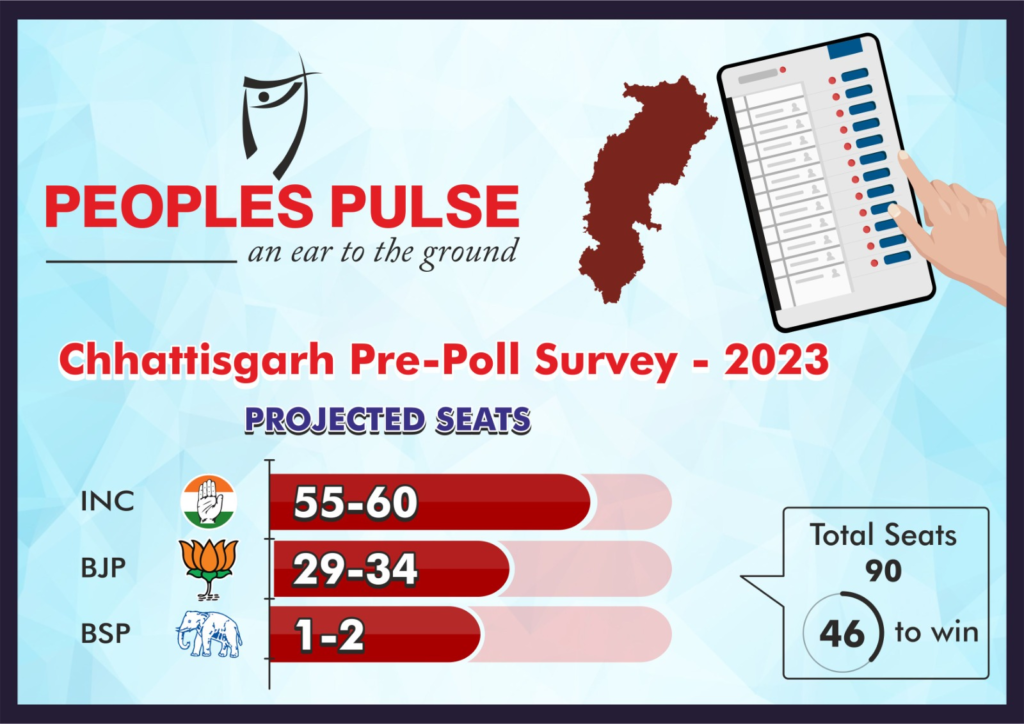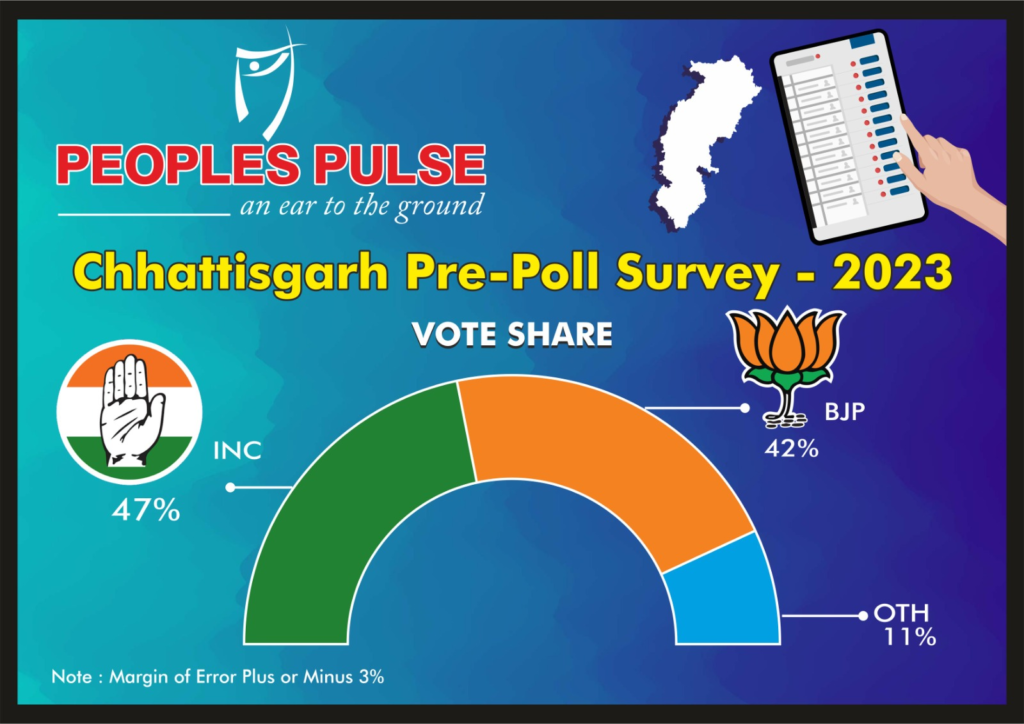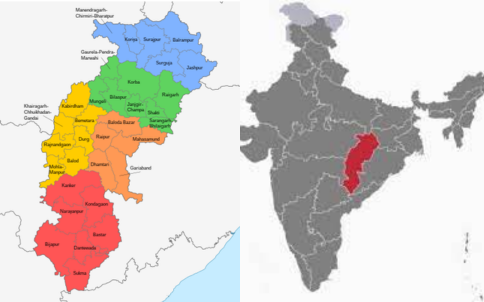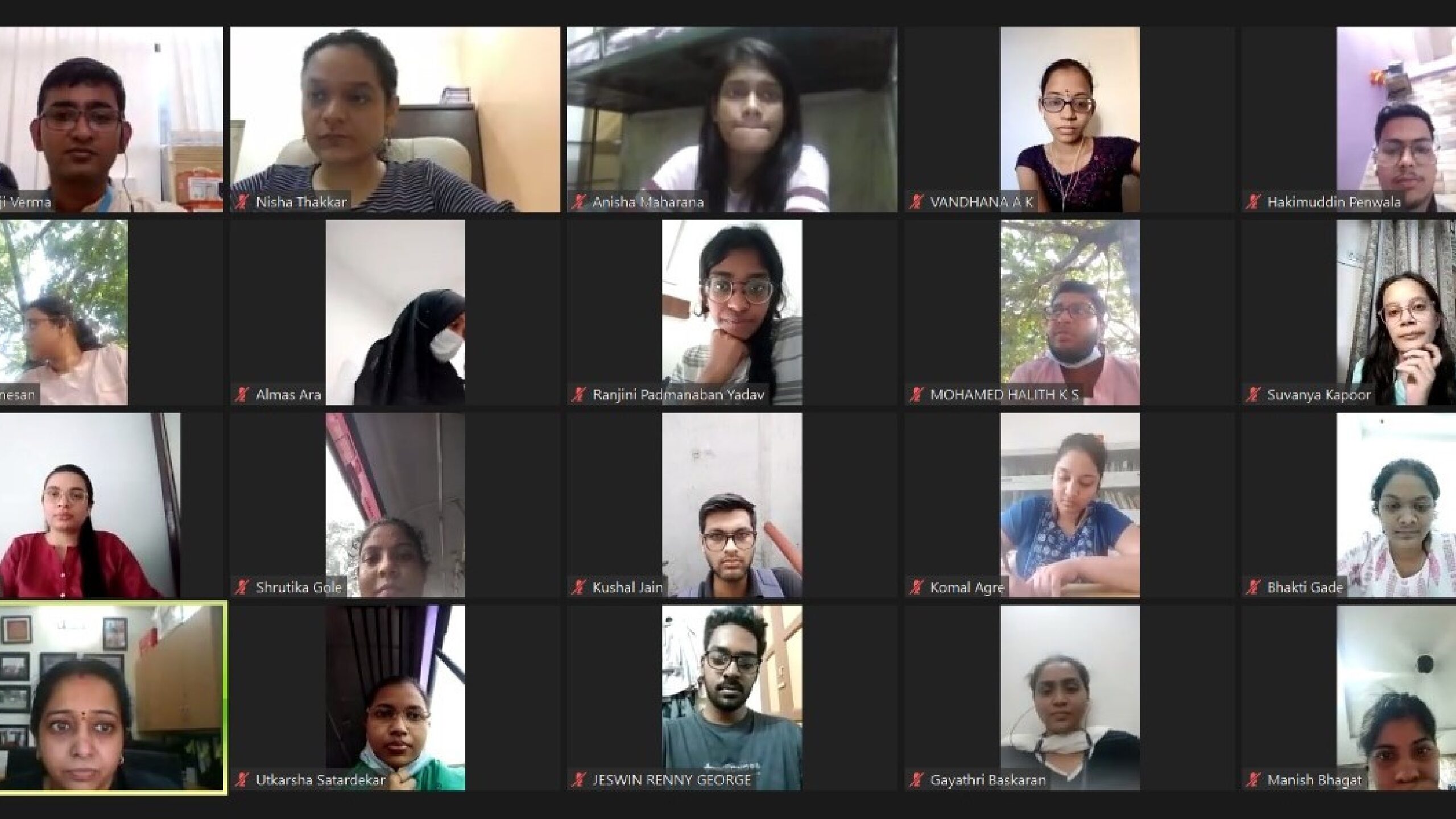Congress comfortably placed in Chhattisgarh
People’s pulse survey
Chief minister Mr Bhupesh Baghel and the Congress party are sitting pretty for a second term in Chattisgarh largely due to his performance in the first term. In fact, it is for this reason that the BJP has failed to build any kind of narrative against Mr Baghel or the Congress party.
Further the BJP, which was hoping hard to wrest power in the state, was severely handicapped by infighting, failure to project a leader in the state and worse the Central leadership literally taking control of the state unit to the point that the latter has begun to lack identity.
According to the Pre-Poll survey conducted by People’s Pulse research Organization, Congress is set to retain power by getting 55 to 60 seats. The BJP would get 28 to 34 seats. The BSP and Independents would get a couple of seats.
Chhattisgarh has a 90-member Assembly and therefore the magic figure is 46. This time, the contest is likely to be mainly between the INC and BJP and INC is likely to get a majority on its own. BJP is fighting well on a seat-by-seat basis so most of the tough tight seats may turn towards BJP where the margin between the two parties is less than one percent.

Other regional parties like Gondwana Gantantra Parishad have lost influence. The recently launched Hamar Raj Party, backed by the Sarv Adivasi Samaj is also more or less a spoiler this time though it is likely to get considerable votes- especially in the Bastar region. Another sub-regionalist party launched by Chhattisgarh Kranti Sena has no concrete influence in any region.
The Janata Congress Chhattisgarh (Jogi) – founded by ex CM late Ajit Jogi contested the 2018 election in alliance with the BSP and got 7 seats (BSP 2 and JCC 5). However, both have weakened over time and JCC is no longer a political challenge after the death of Ajit Jogi. This time, only BSP is likely to get 0 to 2 seats while JCC is likely to get 0 seats. Aam Aadmi Party is likely to get zero seats in this election like last time.
According to the Pre-Poll Survey conducted by Peoples Pulse research organization, the Congress vote share would move from 43% in 2018 to 47%. The main opposition party BJP in 2018 got a vote share of 33%, in the Pre-Poll Survey now it is getting 42%. BJP is increasing its vote share around 9% compared to 2018. For any survey a margin of error is plus or minus three percent.
Peoples Pulse, a Hyderabad-based Political Research organisation conducted a Pre-Poll Survey in Chhattisgarh for two weeks from 15th – 31st October 2023. Four Polling Stations selected from each Assembly Segment using the systematic random Sampling, to collect the Samples. The Survey consisted of a structured questionnaire, with face to face interviews. In each Polling station 15-20 randomly selected samples from the Electrol Rolls were collected. A total of 6,120 samples were chosen such that the sample reflects the situation on the ground in terms of caste, religion and age. Gender was given equal representation.
“Politikos” team have assisted Peoples Pulse research organization with data analysis and the basic generation of the report.
While doing this Pre-Poll survey, candidate lists of major parties on all 90 seats were announced but the date of withdrawal was still quite away. Still, the electoral situation on the majority of seats in terms of candidates had settled by then.
The Pre-Poll survey found an overall pro-incumbent mood in the state which seems to be continuing when compared with the findings of the previous round of Mood survey conducted by Peoples Pulse in the month of June 2023. The major factors that seem to be contributing to it are the welfare policies and announcements of the Congress government led by Bhupesh Baghel, the Chhattisgarhiya sub-regionalism, and failure of BJP as the main opposition party to build a significant narrative against the Congress.
According to the Pre-Poll Survey, BJP is likely to improve (maybe even double in the best case) its seat tally this time, compared to the 2018 elections but Congress is still comfortably ahead of the majority mark. Further, this round of Pre-Poll survey found that other than BSP, any other party in the state may not be able to win a single seat which means a severe setback to JCC, which did well in the last election.
Congress is enjoying the edge in all parameters of the Pre-Poll survey conducted by People’s Pulse research organisation. The Pre-Poll Survey showed that the Congress is leading over the other parties uniformly on all parameters, namely, development, welfare, community preference, C.M choice, party preference, across age and gender.
Regions
Chhattisgarh is primarily divided into 3 regions- north, central and south.
North:
Though technically only 14 seats of Surguja come under this administrative zone, broadly the north region comprises districts like Balrampur, Surajpur, Manendragarh-Chirmiri-Bharatpur, Koriya, Korba, Raigarh and Sarguja etc. Sarguja is the main administrative division of this region. ST and OBC population comprises a majority in this region while in some areas general voters and SC voters are also present. Among the STs- Kanwar, Khairwar, Korbas, Gond and Oraon, among OBC- Sahu, Raut, Rajwade etc and among SCs Harijan are the main communities. There are 23 seats in the region and in 2018, Congress did very well in the region. Two of senior Congress leaders- deputy CM TS Singh Deo (also called TS Baba) and cabinet minister Jaisingh Agarwal come from this region while BJP leaders and MPs Ramvichar Netam, Gomti Sai, Renuka Singh etc also belong here. In the 2018 elections, INC swept this region as there was a possibility that TS Singh Deo will become CM of the state.

Political Situation:
Pre-Poll survey indicated that influence of TS Singh Deo in the electorate has declined. Further, denial of tickets to 3 MLAs in the Surguja division, allegedly at the behest of Singh Deo namely Manendragarh, Ramanujganj and Samri has also created problems for INC here. BJP on the other hand distributed tickets wisely and fielded 3 MPs in Surguja division itself namely incumbent Lok Sabha MPs- Renuka Singh (fielded on Bharatpur Sonhat), Gomti Sai (Patthalgaon) and ex RS MP Ramvichar Netam (Ramanujganj). This time, BJP is likely to do extremely well here and this is probably going to be the region where BJP will make maximum gains in terms of seats. In 14 seats of Surguja division itself, BJP is likely to get 4 to 7 seats, which is likely to give a great boost to the party as in 2018 it, got 0 seats out of these.
Central:
The central region is the most populous region of Chhattisgarh and 3 administrative divisions- Raipur, Bilaspur and Durg come under it, which are also the biggest urban centers of the state. This is not only the most urbanized and populous zone with 55 assembly seats, but also the SC belt of the state and almost all SC seats of Chhattisgarh fall under this zone.
Among ST- Gond, Kanwar etc, among OBC- Kurmi, Marar, Kalar, Sahu, Devangan, Yadav etc and among SC Satnami and Harijan are the main communities of this region. Sindhi, Rajput, Punjabi, Brahmin communities are also present in good numbers in the cities while the highest concentration of Muslims in Chhattisgarh is also in this region. Almost all big leaders of the state across parties come from this region be it CM Bhupesh Baghel (Durg District), ex CM Raman Singh (Rajnandgaon district), BJP state President Arun Sao (Bilaspur) etc.
Political Situation:
Despite a bad performance in 2018, around 2/3rd of BJP’s seats came from this region. This time it may improve its tally on some of the seats but anti-incumbency against some of its sitting MLAs may also hurt the party. Further, weakening of the JCC which primarily did well in this region and shifting of its vote base to Congress will help the Congress’ prospects. Lastly, since this is also the agrarian belt of Chhattisgarh, the pro-farmer policies and declarations of Bhupesh Baghel government will boost the performance of Congress party- which cut the highest number of tickets of its non-performing incumbent MLAs from this region.
Pre-Poll survey revealed that BJP may do very well in Mungeli, Baloda Bazar, Janjgir Champa districts but Congress appeared stronger in most of the other districts while BSP also may get 1 seat from this region.
South:
The southern Chhattisgarh- also called Bastar region is primarily an ST dominated region and 11 out of 12 seats of this region are reserved for ST candidates. Jagdalpur is the only municipal corporation of this region and districts like Bastar, Dantewada, Sukma, Kanker, Kondagaon etc comprise this region. It is the most naxal affected region of Chhattisgarh and Abhujmaad forest in Narayanpur is considered the headquarters of Maoists in central India. It used to be a BJP stronghold but in the 2018 elections, INC swept the region winning 11 of the 12 seats here. It later won the 12th seat of this region in by election, after the BJP MLA of Dantewada was assassinated by Maoists and a by-election was held. Among STs, Gond, Mariya-Muriya, Bhatra, Halbaetc are the main communities. OBC and the general population here is comparatively less. Leaders like Excise Minister Kawasi Lakhma, Deputy Speaker Santram Netam, PCC president Mohan Markam, Lakheshwar Baghel, Lok Sabha MP Dipak Baik (all Congress) and Kedar Kashyap, ex minister Lata Usendi, ex MP Dinesh Kashyap (all BJP) etc all come from this region. CPI still has some small pockets of influence here in Sukma district while a new outfit- Sarva Adivasi Samaj also has some influence here.
Political Situation:
This time, Congress is likely to lose some seats but it is still likely to be the biggest party in this zone due to popularity of its schemes like MSP on forest produce, land pattas to poor people and influence of its leaders like Kawasi Lakhma, Santram Netam, Lakheshwar Baghel, Dipak Baik, Vikram Mandawi etc. BJP, which got only 1 seat out of 12 here in 2018, is expected to improve its seat tally, but it may not go beyond 3 to 4.
Demography and Political Orientation
General:
General voters in the state are mostly centered in big cities like Raipur, Bilaspur, Jagdalpur, Ambikapur, Korba, Raigarhetc and include Rajputs, Brahmins, Sindhis, Punjabis, Marwaris, Baniya etc. Besides, Odiya voters and Bengalis are also present in some parts. Mostly, they influence political outcomes on a lesser number of seats than the OBCs and STs.
Former Chief Minister Raman Singh, BJP senior leader Brijmohan Agarwal, Saroj Pandey, senior minister Ravindra Chaubey, Deputy CM TS Singh Deo, Vikas Upadhyay, Satyanarayan Sharma, Gurmukh Singh Hora etc come from the general community.
Political Inclination: Divided but slightly more inclined towards BJP.
OBC:
OBCs are the biggest voting bloc of the state and have influence and presence across all regions of the state. The current CM of the state- Bhupesh Baghel also comes from the OBC community. Overall, the community is tilting towards the Congress due to various factors which include pro-farmer policies, CM Bhupesh Baghel as the OBC face and Congress’ Chhattisgariya Sub-regionalism.
Sahu:
Sahu is the biggest OBC community of the state. Sahus are present across all regions of the state. BJP state president Arun Sao, senior cabinet minister Tamradhwaj Sahu etc come from this community.
Political Inclination: Divided but more inclined towards BJP.
Kurmi:
Kurmis comprise the second most influential OBC community of the state. Their population is mostly concentrated in the central region of Chhattisgarh. CM Bhupesh Baghel, Kurud BJP MLA Ajay Chandrakar, BSP MLA Keshav Chandra etc come from this community.
Political Inclination: More inclined towards Congress.
Panika:
Panikas are the weaver caste and have concentration mostly in the central belt. Chhattisgarh assembly speaker Charandas Mahanta comes from this community.
Political Inclination: Mostly inclined towards Congress.
Aghariya:
Aghariya is another OBC caste which is primarily engaged in small-scale cultivation. Their main concentration is in the north central belt of Chhhattisgarh. Minister Umesh Patel and BJP leader OP Chaudhry are the main political faces of this community.
Political Inclination: Divided but mostly inclined towards the INC.
Marar:
Marar community also depends on small-scale cultivation and is concentrated in the central belt of Chhattisgarh.
Political Inclination: Divided but moving closer to BJP due to pro-farmer policies of the government.
Kalar:
Kalar voters are mostly concentrated in the central belt but their population is scattered over the state. Congress’ Sanjari-Balod MLA Sangeeta Sinha comes from this community.
Political Inclination: Divided between INC and BJP.
Devangan:
Devangan population is mostly based in central Chhattisgarh and Janjgir-Champa is the main power center of Devangan politics.
Political Inclination: Divided but more inclined towards BJP.
Yadav:
Yadav population is also concentrated in the central region but in smaller numbers, they are spread across the whole of Chhattisgarh. INC MLAs Devendra Yadav and Dwarkadhish Yadav Bilaspur Mayor Ramsharan Yadav, Rajnandgaon ex MP from BJP Madhusudan Yadav etc are the main faces of the community.
Political Inclination: Divided but more inclined towards BJP.
SC:
SC population in the state is mostly concentrated in the central belt.
Satnami:
This is the biggest and most influential SC community of the state. Ministers like Shiv Daharia, Guru Rudra Kumar, ex MLA and incumbent MLA Punnulal Mohale from BJP etc are the main faces of this community.
Political Inclination: Mostly inclined towards INC.
Harijan and Mahar:
Harijans and Mahars are the other big SC communities of the state and they too are mostly concentrated around the central belt.
Political Inclination: More inclined towards the Congress.
ST:
ST community of the state is mostly concentrated in the north and south regions and very few seats of central Chhattisgarh are influenced by ST voters.
Gond:
Gond is the biggest ST community of the state and determines the Tribal politics of the state. Excise Minister Kawasi Lakhma, PCC president Mohan Markam, ex minister Lata Usendi of BJP etc are some of the faces of this community.
Political Inclination: Divided between various parties like Congress, BJP, Sarv Adivasi Samaj etc.
Kanwar:
Kanwar is the second biggest tribal community of Chhattisgarh and is mostly concentrated in the northern region. BJP MP Gomti Sai, ex minister Ramsewak Paikra, INC Katghora MLA Purushottam Kanwar, Vishnu Dev Sai and Nand Kumar Sai etc are some of the prominent faces of this community.
Political Inclination: Divided but more inclined towards BJP
Khairwar:
Khairwars are in lesser numbers and concentrated mostly in northern Chhattisgarh. 2018 INC MLA Brihaspat Singh is a prominent face of this community.
Political Inclination: More inclined towards Congress.
Oraon:
Oraon is also a big ST community of Chhattisgarh and they are mostly concentrated in the northern region. INC MLAs UD Minj, Vinay Kumar etc are the most prominent faces of the community.
Political Inclination: Mostly inclined towards the Congress.
Pahadi Korba:
Pahadi Korbas are a small community concentrated in the northern region. They don’t have any political representatives in the state assembly.
Political Inclination: Mostly inclined towards BJP.
Halba:
Halba is an influential community in Bastar and parts of the central region of Chhattisgarh. Cabinet Minister Anila Bhediya is the most prominent face of the community. BJP leader Mahesh Gagda is yet another big name of this community.
Political Inclination: More inclined towards the Congress.
Mariya-Muriya:
These two communities are sub Tribes of Gonds and also influential in the Bastar region.
Political Inclination: Divided between Congress and BJP.
Bhatra:
This is another influential tribe of the Bastar region. BJP leaders Kedar Kashyap, Dinesh Kashyap and INC leader Chandan Kashyap are prominent political faces of this community.
Political Inclination: Divided between Congress and BJP.
Muslims:
Muslims constitute a little more than 2% of the state’s population. Muslim population in the state is mostly concentrated in the central belt and around big cities while some parts of Bastar like Keshkal also have Muslim population. Cabinet minister Mohammad Akbar is the most prominent face of the community.
Political Inclination: Mostly inclined towards Congress.
Christians:
Christians constitute around 2% of the state’s population and are mostly concentrated in the northern and southern tribal belts. Kunkuri Congress MLA UD Minz is the most prominent face of the community.
Political Inclination: Mostly inclined towards Congress.
Popularity of Incumbent CM
Bhupesh Baghel has created the image of a local, accessible, hard working CM coming from the OBC community and promoting the local Chhattisgarhia values, culture and traditions. In the current survey, majority respondents across the state said that despite losing a few years in Covid when he couldn’t deliver much, his government has satisfactorily performed and he is likely to get yet another term this time.
As of now, Bhupesh Baghel faces no challenge within the party and when asked if there is any better alternative to him in Congress, an overwhelming majority of respondents across the state responded in negative. The difference this time was that respondents in even Surguja region- where TS Singhdeo came out as the first choice in last Mood survey conducted by the Peoples Pulse in the month of June 2023. Said that Baghel faces no challenge for CM post if Congress comes back.
Challenges from Opposition Parties
When asked if the main opposition party BJP has a CM alternative and whether he or she is better than the incumbent CM, respondents across the state did not reply in affirmative to the second question. The most popular CM face for BJP still remains to be former Chief Minister Raman Singh but majority respondents did not consider him a better alternative than Bhupesh Baghel.
Election Issues
Pro Welfare Policies and announcements of the Congress government: The Congress government came to power riding on the promises of higher procurement rates for paddy, Tendu leaves and other forest produce and loan waiver to farmers which it did. Learning from the same, the incumbent government has announced an even higher rate for paddy this year- amounting to 3200 per quintal approx., while also promising another loan waiver to farmers if it comes back to power. Understanding the unrest on PM Awas anomalies, the state government has promised free houses to more than 7 lakh households while also giving subsidy on LPG cylinders to the women and hiking the labour welfare support from 7000 per year to 10000 per year. The Atmanand School scheme was a major hit and Congress has promised all government schools to be upgraded to that standard. All these policies and announcements are getting huge traction among the electorate and are expected to be the major reason for the comeback of Congress this time.
Allegations of Corruption and anomalies in the PM Awas Yojana: There is widespread discontent among people regarding the anomalies and stalled nature of work in the PM Awas Yojana. People alleged that the central government is sending money for PM Awas but the state government is not contributing its share in the scheme due to which the construction of new houses under the scheme has stopped. BJP previously launched a “Mor Awas Mor Adhikar ” campaign and did a Vidhansabha Gherao on this issue during March 2023 Budget Session. It later made PM Awas a major campaign pitch during the Parivartan yatra and later the election campaign.
Similarly, BJP also alleged the incumbent government of doing massive corruption in mining, PSC recruitment and even liquor sales and also turned them into its electoral campaign issues.
Non-performance of incumbent MLAs: This is a problem with which both the BJP and Congress and even JCC were battling and as a result both major parties had to cut some tickets of incumbent MLAs, though INC denied tickets to a far larger number of MLAs.
Post ticket rebellions and in-fighting: Both BJP and Congress are struggling with this issue and due to rebellions and in-fights, their prospects are getting undermined on a number of seats. Regions like north Chhattisgarh and central zone are witnessing the most of this phenomenon.
Conversion Debate and communal clashes: BJP has alleged that Christian missionaries are doing religious conversion of Tribals in Bastar and other regions using force or money. It has led to a lot of violent skirmishes between BJP backed tribals and newly converted Christians and local churches. Hindu-Muslim clashes were also witnessed in Bemetara and Kawardha districts and BJP gave tickets to Bajrang Dal leader Vijay Sharma in Kawardha and Ishwar Sahu (father of the deceased Sahu youth who died in the clashes) from Saja assembly seats. However, the electoral impact of this is likely to be limited to around half a dozen seats in the state.
It is pertinent to mention that Peoples Pulse research organization conducted Mood Survey in Chhattisgarh from 1st to 30th June 2023. Pre-Poll Survey was conducted from 15th to 31st October 2023. After the two phases of elections in Chhattisgarh final Post Poll survey will be conducted by Peoples Pulse in Chhattisgarh and the final report will be released on 30th November 2023.
Peoples Pulse researchers, alongside the Pre-Poll survey visited all the constituencies in the three regions of the state from 15th to 31st October 2023, to assess the voter dispensation towards the main political parties. They listed the prevailing situation in each Assembly constituency and then marked which party was holding the edge and Tough Fight.




